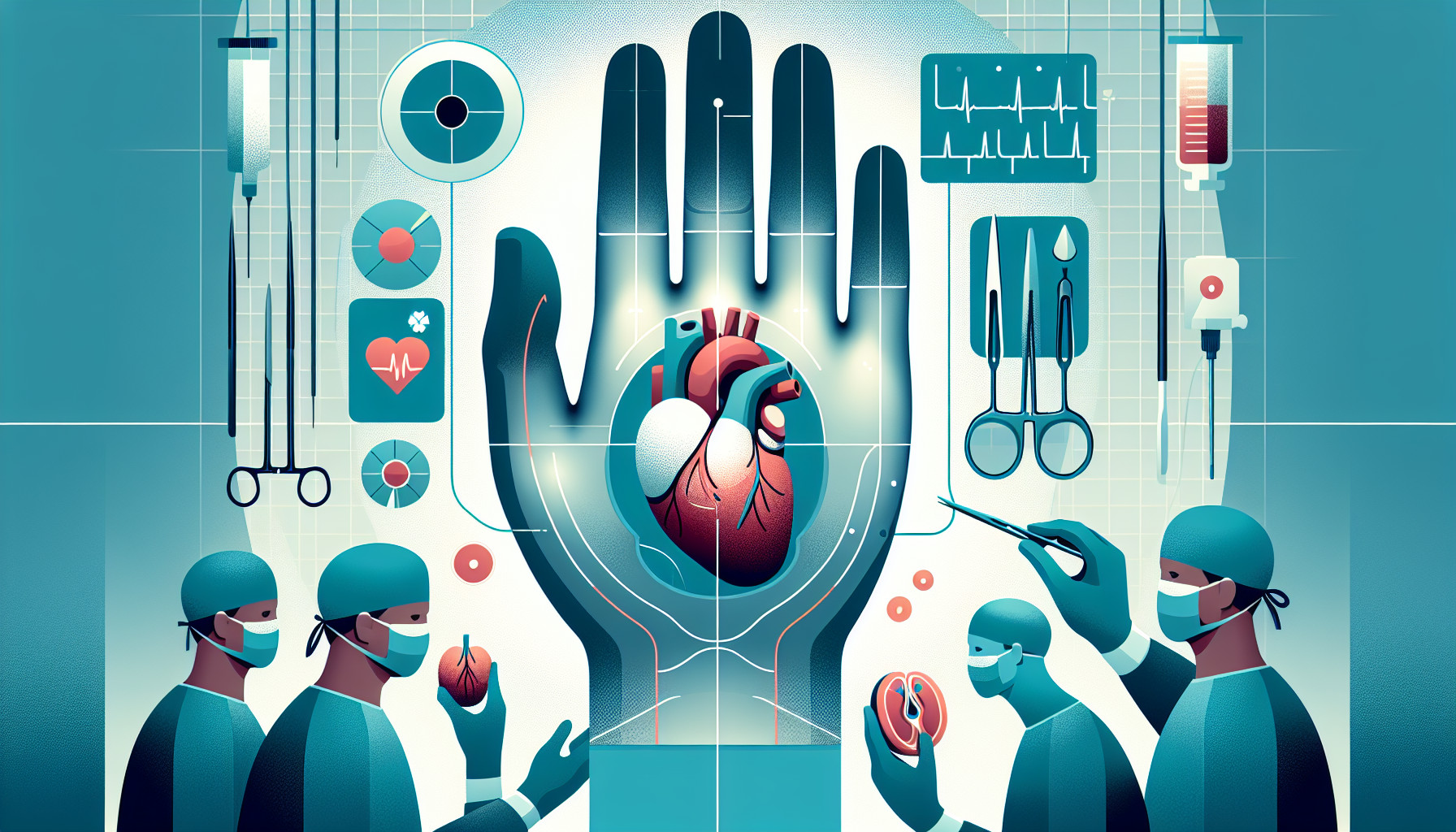Our Summary
This research paper talks about how modern microsurgical techniques - very precise surgery performed under a microscope - have allowed for new ways to reconstruct complex bone and soft tissue injuries. This, combined with advances in transplant immunology (the study of how the body reacts to transplants), has led to successful hand and face transplants that closely match the original body part. This kind of transplant is called vascularized composite allotransplantation (VCA). The paper discusses how using microsurgical techniques in VCA can lead to successful transplants, help researchers understand how the body accepts or rejects transplants, and improve the function of the transplanted body part.
FAQs
- What is vascularized composite allotransplantation (VCA) in the context of hand transplants?
- How have modern microsurgical techniques and developments in transplant immunology contributed to the success of hand transplants?
- What are the benefits of using contemporary microsurgical techniques in VCA for hand transplants?
Doctor’s Tip
A doctor may advise a patient considering a hand transplant to carefully consider the risks and benefits of the procedure, including the need for lifelong immunosuppressive medications to prevent rejection of the transplanted hand. It is important for the patient to understand the potential complications and long-term implications of a hand transplant, and to work closely with their medical team to ensure the best possible outcome.
Suitable For
Patients who are typically recommended for hand transplant are those who have experienced severe hand trauma, such as amputation or severe burns, and have exhausted all other reconstructive options. These patients may have limited function and mobility in their hands, impacting their ability to perform daily tasks and affecting their quality of life. Hand transplant may also be recommended for patients with congenital hand abnormalities or degenerative conditions that severely impact hand function. It is important for patients undergoing hand transplant to be in good overall health and have realistic expectations for the outcomes of the procedure.
Timeline
Before hand transplant:
- Patient undergoes extensive psychological evaluation to determine their readiness for the procedure.
- Patient undergoes thorough medical evaluation to assess their overall health and suitability for surgery.
- Patient may undergo physical therapy and rehabilitation to prepare for the transplant and improve their hand function.
- Patient is placed on a waiting list for a suitable donor hand.
After hand transplant:
- Patient undergoes surgery to receive the donor hand, which may take several hours to complete.
- Patient is closely monitored in the intensive care unit immediately after surgery to ensure the success of the transplant.
- Patient begins a regimen of immunosuppressive medications to prevent rejection of the donor hand.
- Patient undergoes extensive physical therapy and rehabilitation to regain function and mobility in the transplanted hand.
- Patient continues to be closely monitored by medical professionals to ensure the long-term success of the transplant and manage any potential complications.
What to Ask Your Doctor
What are the potential risks and complications associated with a hand transplant?
How long is the recovery process after a hand transplant and what type of rehabilitation will be necessary?
What are the long-term implications of taking anti-rejection medications after a hand transplant?
How will a hand transplant impact my daily life, including activities such as work, hobbies, and personal care?
What is the success rate of hand transplants and what factors contribute to a successful outcome?
Are there any alternative treatments or therapies that should be considered before opting for a hand transplant?
How will the transplant team determine if I am a suitable candidate for a hand transplant?
What is the expected timeline for undergoing a hand transplant, from initial evaluation to surgery and recovery?
How often will follow-up appointments be necessary after a hand transplant, and what will be monitored during these visits?
Are there any specific lifestyle changes or precautions that should be taken after a hand transplant to ensure the best possible outcome?
Reference
Authors: Cetrulo CL Jr, Ng ZY, Winograd JM, Eberlin KR. Journal: Clin Plast Surg. 2017 Apr;44(2):425-429. doi: 10.1016/j.cps.2016.12.007. Epub 2017 Feb 3. PMID: 28340673
